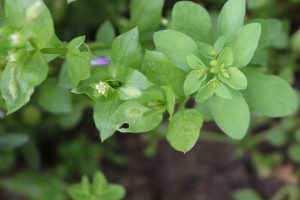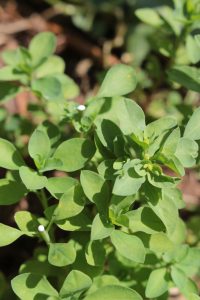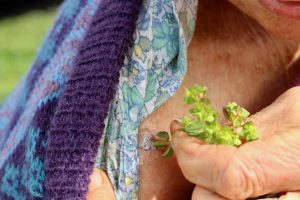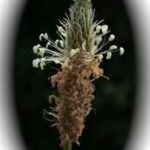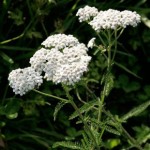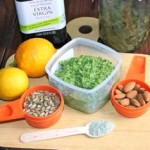I usually write about edible weeds that we can safely use and include in our diets. This time I’m talking about two common plants in our gardens that are not good to eat. However, don’t disregard them as they have other values.
Firstly there’s Milkweed, Petty spurge, Radium weed or Cancer weed (Euphorbia peplus). I have tons of this in my garden. It is an annual plant growing 5–30 cm tall with smooth round, hairless stems. The leaves are oval with a smooth margins looking almost identical in colour and shape to chickweed leaves. These two plants frequently grow together especially when chickweed flourishes in cooler weather during winter. Milkweed has tiny green flowers in three-rayed umbels.
Inside milkweed stems is a milky latex sap which is toxic, and used only externally as a therapeutic agent for the removal of warts and sunspots on the skin. Quite a few people tell me in workshops that they have removed warts with this milky sap. Others report using it successfully on cancerous skin lesions.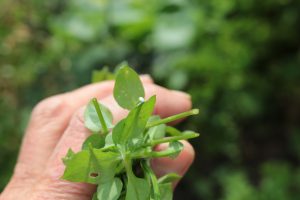 The anti-tumour component of Euphorbia peplus is ingenol mebutate. If you should accidently eat milkweed this substance will burn the inside of your mouth for a couple of days. So how do I prevent this happening?
The anti-tumour component of Euphorbia peplus is ingenol mebutate. If you should accidently eat milkweed this substance will burn the inside of your mouth for a couple of days. So how do I prevent this happening?
When I pick chickweed I don’t want to accidentally also pick milkweed. My strategy is to take hold of a small bunch of chickweed, cut the lot with scissors then turn the bunch upside-down and look at the stalk ends. Any milkweed will immediately ooze out the milky white sap, (the photo shows cut stems with milk oozing out of euphorbia but not chickweed) revealing itself so then I can pull those stems out.
Fumitory (Fumaria officinalis) has been scrambling it’s feathery weak stems up through and over things
in our gardens during late winter and spring. This is another annual most easily recognised by its tubular flowers which are pink with a red tip and a stroke of green. Another variety wall fumitory (fumaria muralis) is without the green stripe.
It is very bitter in taste and I don’t include it in my smoothies. It is not poisonous but I am cautious usiing it. “The New Zealand Family Herb Doctor: A book on the Botanic Eclectic System of Medicine” by James F Neil. M.D. U.S.A., Dunedin: Mills, Dick & Co. 1889 says however, “it is recommended as a tonic. The expressed juice, a deobstruent (clearing obstructions from internal organs) was taken as an infusion of the dried herb, an ounce (28gms) to the pint (.473 mls). Externally mixed with the juice of dock in vinegar, it is good as an outward application on pimples, blotches and scabs.” Another source said it could be added to a bath to treat eczema, itching skin and acne.
Remember that before about the 1920s medicines from plants were the standard remedies.
While I don’t use fumitory myself I appreciate its uniqueness and appreciate the diversity it adds to my garden.
